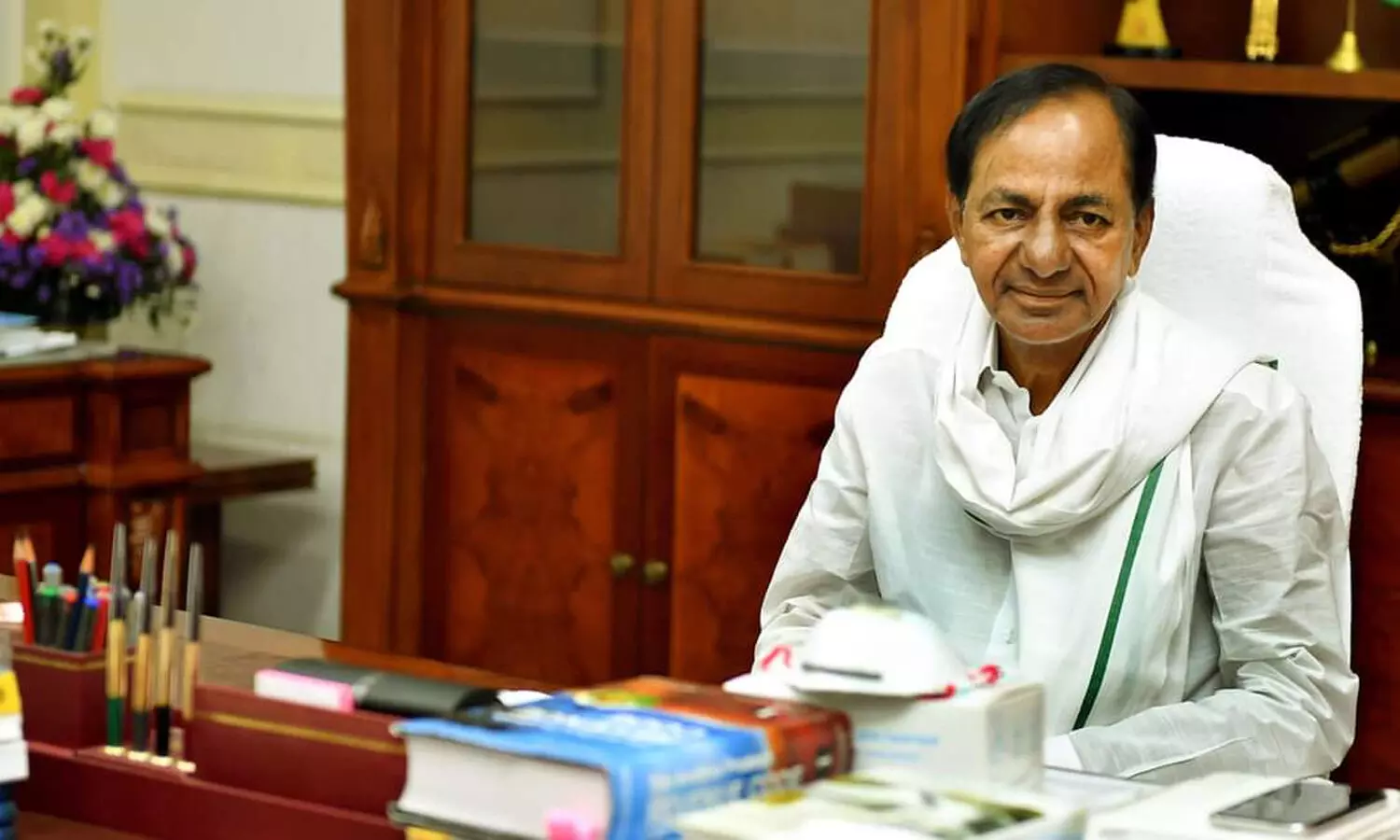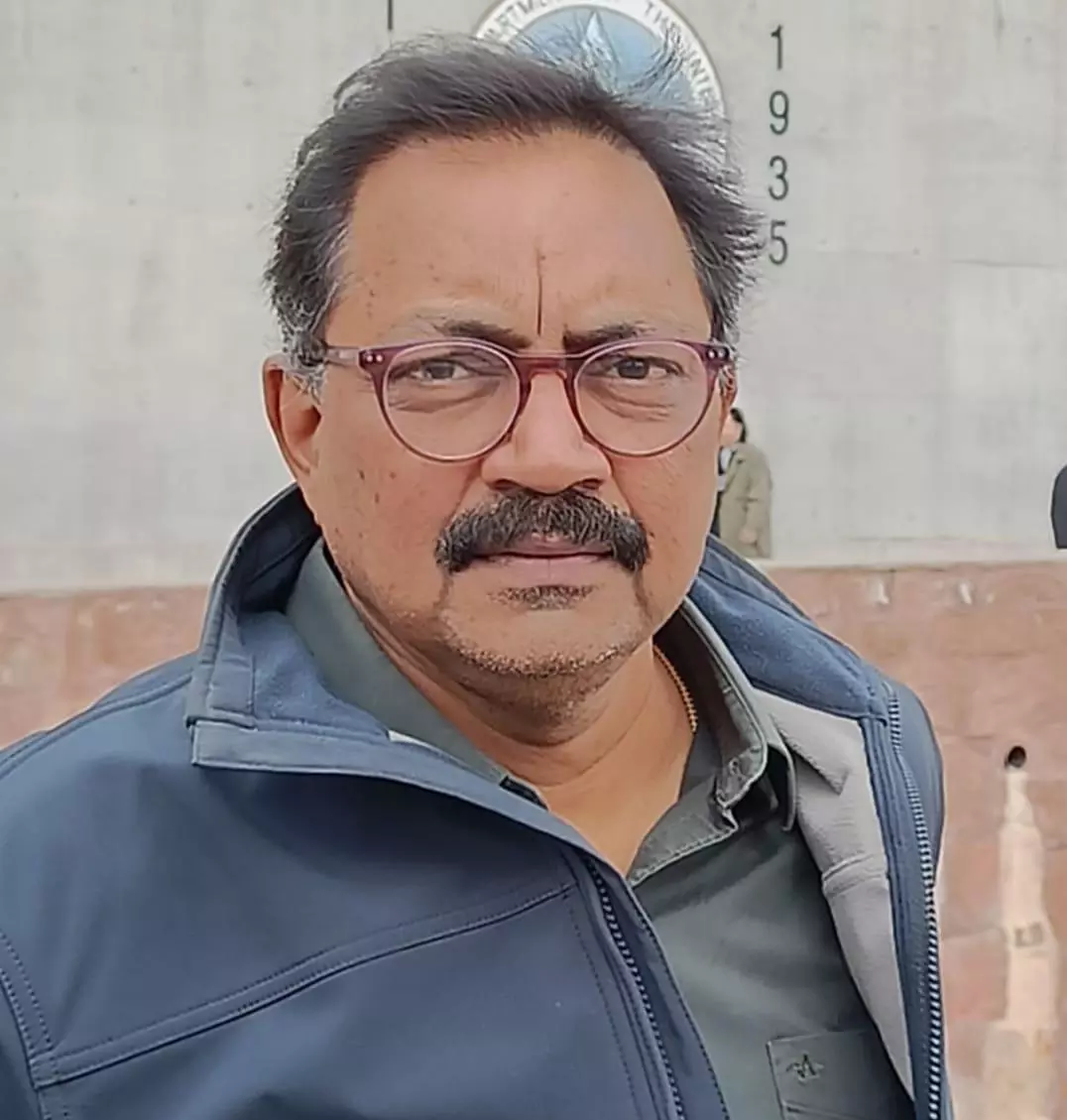KCR’s Reply: No graft in PPA with Chhattisgarh, no ban on subcritical technology, BHEL not private enterprise
Former Chief Minister K Chandrashekar Rao in his reply to Justice L. Narasimha Reddy Commission presented the power sector scenario in the State in 2014 and the steps his Government took to rectify the problem.

HYDERABAD: Former Chief Minister K Chandrashekar Rao in his reply to Justice L. Narasimha Reddy Commission presented the power sector scenario in the State in 2014 and the steps his Government took to rectify the problem.
KCR said that the farming sector bore the brunt because of erratic power supply. As a result of this, lakhs of agricultural pump sets were burnt and farmers were committing suicide. “The industrial sector declared a power holiday, industrialists are staging dharnas at Indira Park in Hyderabad for electricity supply, diesel generators are being installed in all apartments for household needs, and generators, inverters, converters, and stabilisers are heard in any shop in the cities,” KCR said.
He mentioned that there were only three hours of power available in the morning and three hours in the evening for the farming sector. He added that Telangana was created in such a situation.
As per the State Bifurcation Act, 53.89 percent was allocated to Telangana and 46.11 percent to Andhra Pradesh. The electricity given to Telangana as per the bifurcation law is not enough. “We had a shortfall of about 2,700 MW following the consumption then (2014). Andhra Pradesh, on the other hand, has a deficit of 2,400 MW, including 1,500 MW due to non-supply of electricity and 900 MW due to non-supply of gas-based power. There is a shortage of about 5,000 MW in the power sector in Telangana,” he mentioned.
The Telangana Government and the Telangana Electricity Board have worked in unison to bring the state out of the power crisis and bring lasting benefits to Telangana. “As a result, Telangana has emerged as the only state in India to supply quality round-the-clock power to all sectors, with the state's installed power reaching over 20,000 MW, and the supply and distribution systems strengthened to provide regular power supply. It is a matter of pride for all of us that the per capita consumption of electricity in Telangana has increased from 1,196 units at the time of formation of the state in 2014 to 2,349 units in 10 years,” KCR pointed out.
90% of thermal power units are sub-critical
He said that he opted for sub-critical technology in Bhadrari and Yadadri because super-critical technology was expensive. “No doubt the supercritical is less polluting than the subcritical. However, the construction cost of a supercritical plant is much higher than a subcritical plant. As of 2014, about 90 percent of the thermal power plants in India were built in a sub-critical manner,” he explained.
KCR said that Kothagudem Thermal Power Plant (KTPS-1720 MW) in Kothagudem, Kakatiya Thermal Power Plant (KTPP-500 MW) in Bhupalpally, Ramagundam Thermal Power Plant (RTPC-62 MW), Vijayawada Thermal Power Plant (VTPS-1760 MW) in Andhra Pradesh were all built in a sub-critical manner.
The Telangana Government then decided to build new thermal power stations with the help of Bharat Heavy Electricals Limited (BHEL) a state-owned company headquartered in New Delhi. "BHEL said that they have the equipment ready for the construction of sub-critical power plants and Telangana has an urgent need so that within two years BHEL can build the 1,080 MW Bhadradri Thermal Power Plant in Manuguru,” the former CM recalled.
The seventh phase of 800 MW proposed in Kothagudem could be given a supercritical technology plant in four years. Given the severe power crisis in Telangana, it was decided to make electricity available at the earliest. For this, an initiative was taken to construct a thermal plant in Manuguru in a sub-critical manner.
“In extraordinary circumstances, extraordinary decisions have to be made. Telangana is in the midst of a power crisis. As of 2014, there is no ban or regulation on the subcritical. The 12th five-year plan, which was in force till 2017, also stated that sub-critical thermal plants can be built. However, in the press conference held by you on June 11, 2024, without considering any of the above-mentioned points, you made wild comments on the Bhadradri sub-critical thermal station,” KCR said.
“You have ignored the fact that there are no restrictions on sub-critical power stations even in the 12th Five Year Plan which will be in force till 2017. You have not only ignored the fact that the work of Bhadradri sub-critical Thermal Station was started and completed and dedicated to the people only after obtaining permissions and approvals from all the necessary statutory bodies of the Central Government and the State Government, he added.
Explaining that the additional coal load due to the sub-critical plant at Bhadradri would be assessed by the Negotiations Committee of Telangana Genco through a formula to be adopted by them KCR said that Justice Reddt ignored this fact and made absurd comments that the sub-critical plan.
He further said that since the time of the Telangana movement till today, it had been the BRS party's policy to promote public sector enterprises and since BHEL was a central public sector enterprise, it was entrusted with the work on the nomination system.
Giving reasons for a powerline linking Telangana with Chhattisgarh he said that Telangana faced a severe power crisis after it became a state in 2014 and at that time Telangana was not connected to the national grid, but only to the southern grid.
Power from Chhattisgarh
The then Government had ordered the power companies to investigate and their study showed that electricity was not available anywhere in the southern states. After discussions between the officials of both Telangana and Chhattisgarh, the State expressed its readiness to provide 1000 MW initially and another 1000 MW in the future if required. Then, on September 3, 2014, a Memorandum of Understanding (MoU) was signed in Raipur to purchase 1000 MW of power from Chhattisgarh. The Chhattisgarh Government was also ready to provide another 1000 MW.
As there were no transmission lines to supply power from Chhattisgarh to Telangana Power Grid Corporation of India Limited (PGCIL), a Central Government undertaking, started construction of a line from Wardha to Dinpally in Maharashtra. “For the speedy completion of the construction of the line we were required to submit a PPA with the power purchasing company. The Telangana government was forced to book a dedicated corridor. To bail out Telangana, which is reeling under the worst power crisis in recent times, Chhattisgarh has entered into PPAs with power companies. The Telangana government and the power companies had no option but to book the corridor with PGCIL,” he explained.
At the time of signing the agreement, the Chhattisgarh government had said that they would provide electricity from the Marwa power plant, the construction of which was also in the final stages. “As the line is also likely to be completed, the PPA for the purchase of Marwa power has been approved. However, you said in a press conference that the Marwa Power Plant is not in existence, without mentioning or considering any of the points mentioned above. It is most unfortunate that you are ignoring the fact that all the Power Purchase Agreements (PPAs) take place before the start of the construction of the plants,” KCR wrote.
Based on the PPAs, a 2000 MW corridor had been booked with PGCIL. After the commencement of power supply from Chhattisgarh, a corridor of 1000 MW was used. The second 1000 MW corridor was canceled due to the non-supply of power from Chhattisgarh. The cancellation had not caused any financial loss to the Telangana State Electricity Board, KCR said.
“Then Telangana was in a severe power crisis, we lost Seeleru power station to AP, which was a resource for Telangana, and we did not get our share of electricity from Andhra Pradesh, and the government of Andhra Pradesh did not give Telangana's share from private power stations,” KCR said the reasons why the Government had to rush and bring quality power to the new-born State.



